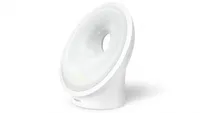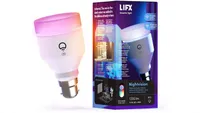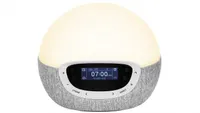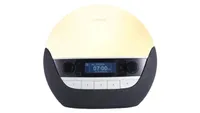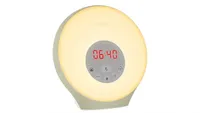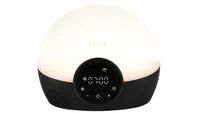Best wake up light: alarm clocks to wake the natural way
Recreate the dawn at whatever time you like, with these best wake up lights.
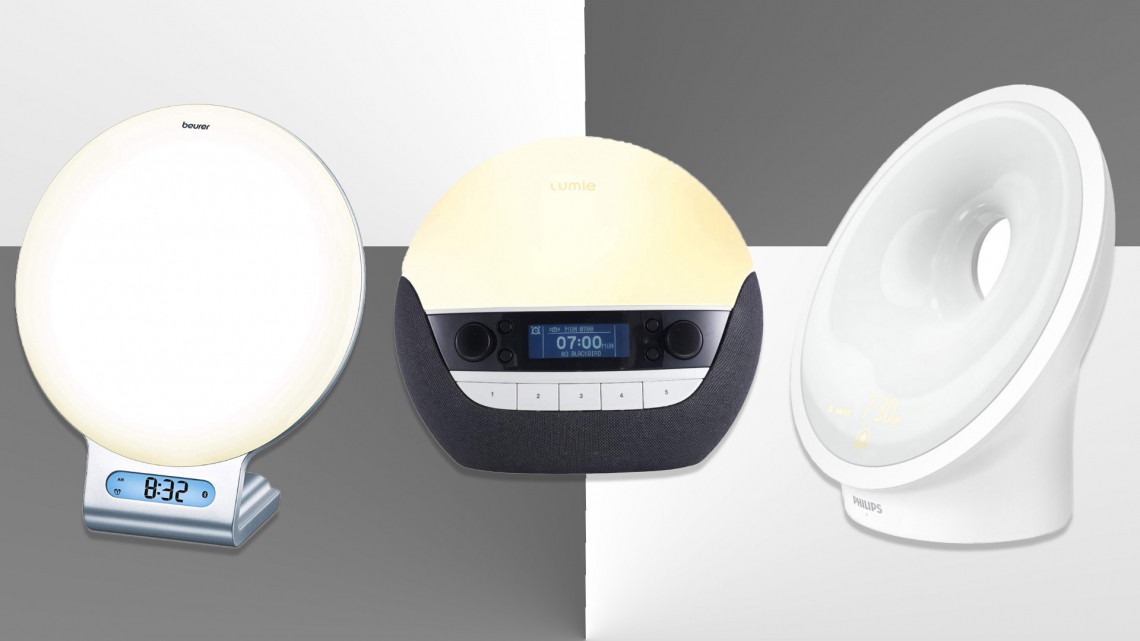
End up often feeling rubbish when you wake up? Clocks going back messed with your circadian rhythms? You may want to try a wake up light. They are most often used in the winter months, when many of us have to get up when it's still dark outside.
A wake-up light emulates the sunrise, which your body can take as a cue to get ready for the day. Yep, even while you are asleep.
As such, a wake-up light can also be an asset for shift workers who rarely get to line-up their schedule with the day-night cycle. We love these things, and find they can significant reduce that grogginess that makes it so much harder to get out of bed.
Lumie is one of the biggest names in this area. We’ll take a look at what you actually get with its different wake-up light models and some of the alternatives, including one that isn’t a traditional wake-up light at all.
Have a read of our best alarm clocks shortlist for something a little different.
Best wake up lights
Philips is the biggest name in wake-up lights next to Lumie. The Somneo HF3651 is its current top model. It is relatively simple, with an FM radio and eight alarm tones. There’s no app control or Bluetooth here.It is one of the funkier-looking designs, though, with a translucent, curvy light ring and a display that sits just under this ring's surface. The Somneo also has guided breathing exercises, which may help if you suffer from anxiety or have trouble sleeping at times.
A LIFX smart bulb can be used to light your whole room, and it costs less than most wake-up alarm clocks. It's a new way to think about wake up lights.You screw it in like a normal light bulb. There’s no hub, you simply control it using the LIFX app on your phone. The wake-up feature is impressive, gradually gaining brightness unless your bedroom is flooded. These light bulbs have output of over 1100 lumens, and you can control the arc of the light lift in the app.There’s no alarm clock side here, though, so you’ll have to use your phone or another gadget.
Here’s where the Lumie range gets more interesting. The Glow 300 has a radio, so you don’t have to wake to sounds that could come from a deep tissue massage studio. You can also slow down the wake-up process all the way to 90 minutes, if you find other wake-up lamps tend to wake you up too early with unsubtle light level changes.The bad news? It has a simple FM radio, not the DAB one many of you may want. However, if you’re here for the full wake-up experience, the Glow 300 also offers 14 soundscapes including “Cafe”, “Tropical Birds” and “Guzheng”, a Chinese stringed instrument.
Here’s the big daddy Lumie, the model we all really want. It has a DAB/DAB+ radio, so you can rise to stations like BBC 6 Music if you like. There’s Bluetooth, a USB port to charge your phone overnight and 20 wake sounds if you’d rather use the DAB receiver during the day instead.The Lumie Bodyclock Glow 750 can also be used as a low-blue-light lamp in the evening. Blue light tends to have the greatest effect on your sleep patterns. It’s why you probably shouldn’t use your phone in bed at 11:30pm, so this feature is a handy extra for your sleep health.
This is a very basic wake-up light, and is a replacement for the Glow 30 you might have seen on your research travels. You set the alarm time and it gives you a gradual 30-minute ramp-up of light before then.There’s no radio in the Sunrise Alarm, so you’ll have to wake to a very non-blissed-out beep. But it does also function as a multi-colour mood light during the evening, a feature missing from many older cheap SAD lights.
Step up to the £100-ish Glow 150 and you get a wake-up light with Lumie’s recognisable pod-like design. At this level you can change the duration of the wake-up process, or how long it takes the light to get to full blast, in other words.The colour tone changes as that happens, to mimic the sunrise, and there’s a sunset mode too. There’s no radio in the Glow 150, though, which may seem surprising given its price. You have a choice of nine wake-up sounds, but this is a pure wake-up or "SAD" gadget.
SOMETHING MISSING FROM OUR SHORTLIST?
Tell us about it, and if enough people agree we'll add it in.
Get exclusive shortlists, celebrity interviews and the best deals on the products you care about, straight to your inbox.
You must confirm your public display name before commenting
Please logout and then login again, you will then be prompted to enter your display name.
